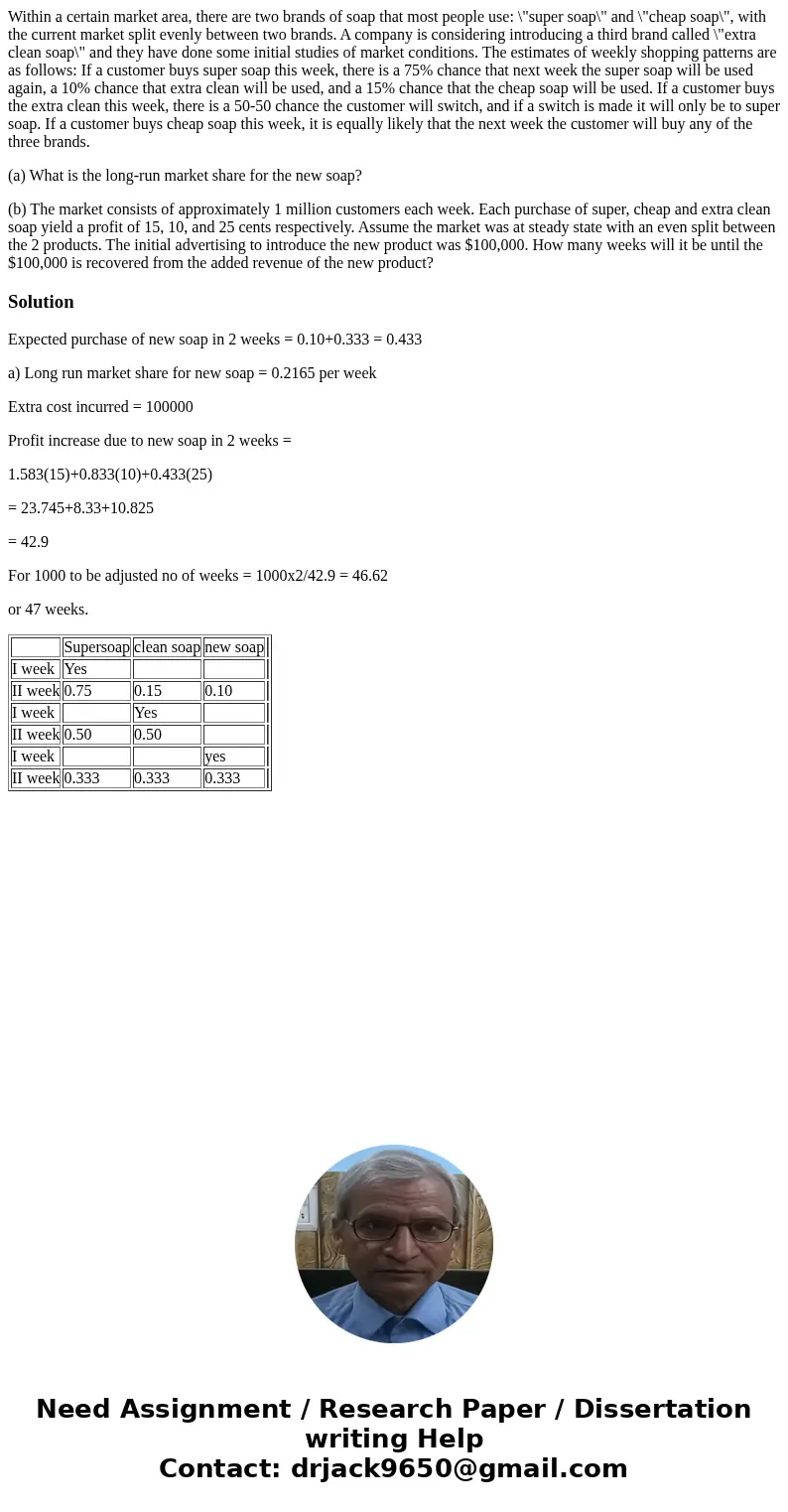Within a certain market area there are two brands of soap th
Within a certain market area, there are two brands of soap that most people use: \"super soap\" and \"cheap soap\", with the current market split evenly between two brands. A company is considering introducing a third brand called \"extra clean soap\" and they have done some initial studies of market conditions. The estimates of weekly shopping patterns are as follows: If a customer buys super soap this week, there is a 75% chance that next week the super soap will be used again, a 10% chance that extra clean will be used, and a 15% chance that the cheap soap will be used. If a customer buys the extra clean this week, there is a 50-50 chance the customer will switch, and if a switch is made it will only be to super soap. If a customer buys cheap soap this week, it is equally likely that the next week the customer will buy any of the three brands.
(a) What is the long-run market share for the new soap?
(b) The market consists of approximately 1 million customers each week. Each purchase of super, cheap and extra clean soap yield a profit of 15, 10, and 25 cents respectively. Assume the market was at steady state with an even split between the 2 products. The initial advertising to introduce the new product was $100,000. How many weeks will it be until the $100,000 is recovered from the added revenue of the new product?
Solution
Expected purchase of new soap in 2 weeks = 0.10+0.333 = 0.433
a) Long run market share for new soap = 0.2165 per week
Extra cost incurred = 100000
Profit increase due to new soap in 2 weeks =
1.583(15)+0.833(10)+0.433(25)
= 23.745+8.33+10.825
= 42.9
For 1000 to be adjusted no of weeks = 1000x2/42.9 = 46.62
or 47 weeks.
| Supersoap | clean soap | new soap | ||
| I week | Yes | |||
| II week | 0.75 | 0.15 | 0.10 | |
| I week | Yes | |||
| II week | 0.50 | 0.50 | ||
| I week | yes | |||
| II week | 0.333 | 0.333 | 0.333 |

 Homework Sourse
Homework Sourse